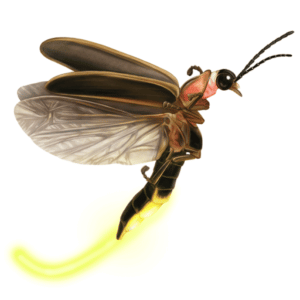Notice: Below is a list of 0 important links included on this page.
Please note that while screen readers have made significant strides, they may still lack full support for optimal web accessibility.

You must be logged in to post a comment.
This is a project of the Xerces Society, working in collaboration with the IUCN SSC Firefly Specialist Group and New Mexico BioPark Society.
Copyright © 2025 The Xerces Society •1631 NE Broadway Street, #821 • Portland OR 97232 USA
Thanks for doing submitting this observation, and for doing a full survey!
This location would be an unusual place to find Photinus carolinus, which is typically found in hilly Appalachian forests.
The multi-pulse flash pattern that you describe could fit with Photinus carolinus, but there are several other species that could do a multi-pulse flash pattern, such as Photinus consimilis and some species of Photuris (Photuris would be my best guess based on the habitat, flash pattern, and display heights). Because of this, I have changed the genus and species to “unknown.” Catching and photographing a firefly can be challenging, but it can really help to narrow down options when trying to identify to species.